Specifications and features
Although the G80 shares a similar layout with the G7, with dual control dials, large handgrip, 3-in articulating LCD touchscreen, and many of the specs, such as the 16-MP four-thirds CMOS sensor (albeit now without the anti-aliasing filter), and 4K video capture, it adds several tempting features. Most appealing of those, arguably, is the addition of 5-axis sensor shift stabilization plus second-generation Dual IS 2. However, the G80 also gets weatherproofing and a 2.36M-dot OLED finder with increased magnification (now 0.74x, up from 0.7x), and a high (20mm) eye-point for longer eye relief, especially useful if you wear eyeglasses.
With a magnesium alloy front panel, the G80 also has a more heavily-metaled body. Panasonic says that along with the redesigned electro-magnetic shutter mechanism from the GX85, complete with an electronic first curtain (and short 1/2000sec maximum shutter speed), shutter shock has been reduced by as much as 90%.
In most other regards, the G80 echoes the earlier G7. It shares the same 49-point CDAF plus DFD AF system at up to 6 fps, the same Venus Engine with ISO 100-25600 (with expansion), and built-in WiFi connectivity. However, in keeping with the theme of improving capture sharpness, the G80 also features a built-in focus stacking option.
The Panasonic Lumix DMC-G80 measures the same 4.9 x 3.9 x 3.0” / 124.0 x 98 x 75.5mm as the G7, but weighs slightly less at 13.93 oz. / 395g, body only (without battery or card). It is available now at a price of around $899 (USD) body only, around $100 more than the earlier G7.
- 16-Mpix Four-Thirds LMOS sensor
- 2.36M-dot EVF
- 5-axis IS, Dual IS 2
- 3 in 1.04M-dot articulating LCD screen
- 4K UHD video at 30/24 fps
- DFD AF system
- ISO 100-25600 (with expansion)
- 6 fps continuous shooting with AF-C
- Built-in WiFi connectivity
Measurements: Good all-rounder
Attaining a DxOMark score of 71 points, the DMC-G80 sensor is one of the better-performing four-thirds sensors; however, it’s slightly behind the 20.3-MP sensor in the top-of-the-range DMC-GX8 as well as the 16-MP sensor in the older DMC-GH4. Somewhat surprising is just how well the 20.1 MP 1-in type sensor performs in the DMC-ZS100 compact — it’s ranked just below the G80, with 70 points.
Panasonic Lumix DMC-G80 vs. Panasonic Lumix DMC-GX80 vs. Panasonic Lumix DMC-GX8: Equivalent sensor performance
It will likely come as no surprise to see that the relatively new rangefinder-like, $800 GX80 (GX85 in North America) shares the same 16-MP CMOS four-thirds sensor without an anti-aliasing filter (as well as several other core features, including the 5-axis BIS and first-generation Dual IS). Panasonic’s top-of-the-range $1,199 GX8 also features a four-thirds sensor, of course; however, it is a different unit altogether, with a higher (20.3-MP) pixel count. Aside from the different sensor, the GX8 shares components with both models.
Like the G80, the GX has an articulating LCD touchscreen, a similar viewfinder — albeit with even greater magnification (0.77x), and weatherproofing, but the in-body stabilizer is 4-axis rather than then the vaunted 5-axis seen on the later models, though it also features Dual IS (with a suitably-equipped lens).
The shared 16-MP sensor has good dynamic range at low ISO, but not even the GX8 with its lower ISO, better color sensitivity, and higher SNR 18% can improve on it, and there’s practically no difference at higher ISOs, save for a slight improvement in noise levels and the resulting higher low-light ISO score, equivalent to around just +0.3EV. While there’s a slight benefit for users at base ISO in terms of color and lower noise levels, there’s not much to choose from in overall sensor performance between the G80, the GX80, and the high-end GX8.
Panasonic Lumix DMC-G80 vs. Sony A6300 vs. OM-D E-M5 Mk II: Behind the best APS-C sensors
Anyone looking at spending $900 on a body will also likely be considering stretching that a little to $1000, in which case the Sony A6300 looks highly attractive. Not only does it have an impressively sophisticated hybrid AF system with no fewer than 425 PDAF points, a faster burst rate (up to 11 fps with AF-C), and a weather-sealed body, it has of course a larger APS-C sensor with a notably higher pixel count (24 Mpix).
The Olympus OM-D E-M5 Mark II is just $100 more than the Sony, and while it is also attractive — with 5-axis BIS, a 3-in articulating touchscreen, weather sealing, and a viewfinder similar to the GX80 in a highly desirable body — it has a similar 16-Mpix four-thirds sensor, with only a very slight improvement in performance.
While the Panasonic and Olympus have a lot going for them, in sensor dynamics alone, the Sony is hard to beat. It has lower noise at all ISOs, equivalent to just over +1 EV in our low-light ISO score. Dynamic range is also quite significantly wider at either end of the ISO range, with around a similar +1 EV advantage. While DR isn’t everything in a camera, it is an advantage in sensor performance, and it’s a tangible benefit when trying to compensate for strongly back-lit subjects in post-production. What’s more, with the Sony A6300, the wider dynamic range isn’t restricted just to base or low ISOs.
Conclusion
Panasonic’s latest DSLR-style Lumix DMC-G80/G85 is certainly an attractive blend of ergonomics, features, and performance. As for sensor performance alone, the G80/85 sensor delivers impressive image quality overall. Indeed, it is not dissimilar to the 20.3 MP sensor in the high-end GX8. Perhaps that’s one reason why we’ve yet to see the 20.3MP unit used more widely. Sensor performance is of course just one aspect when weighing the pros and cons of a new camera or camera system, for which other factors such as lens choice, physical size, and of course individual camera features and ergonomics must be taken into consideration before making a decision.


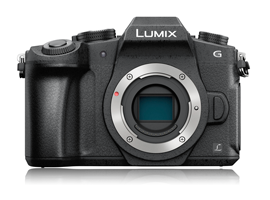



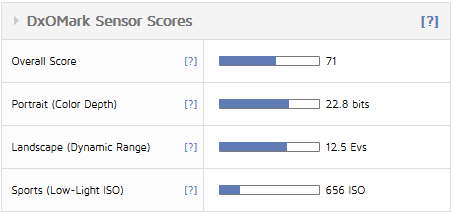
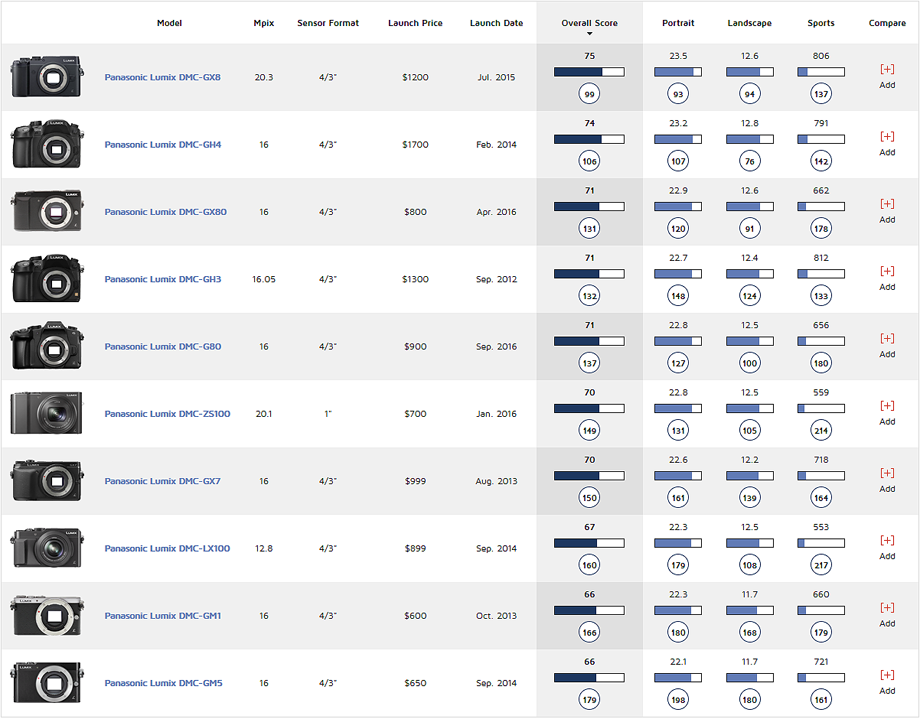
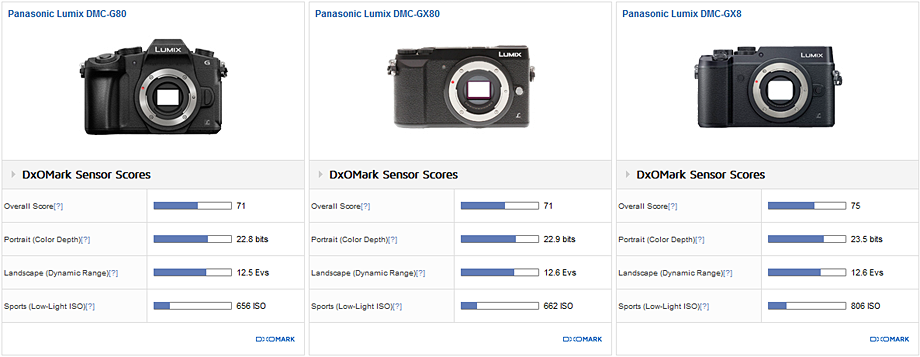
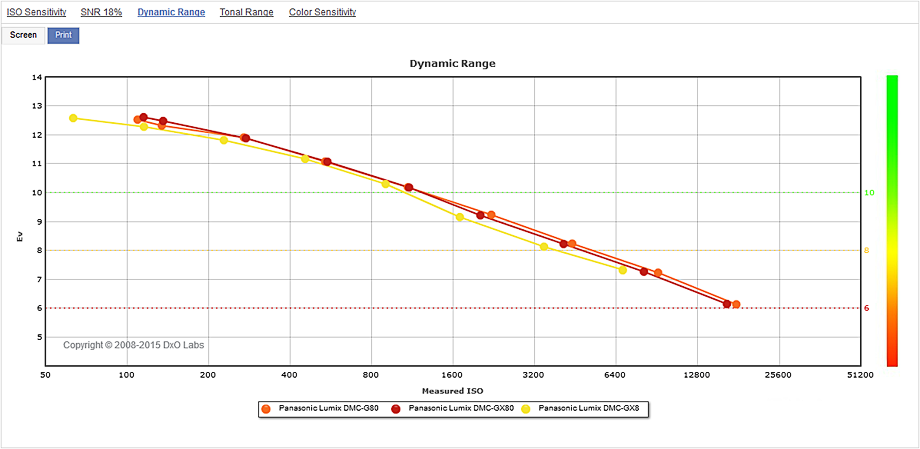
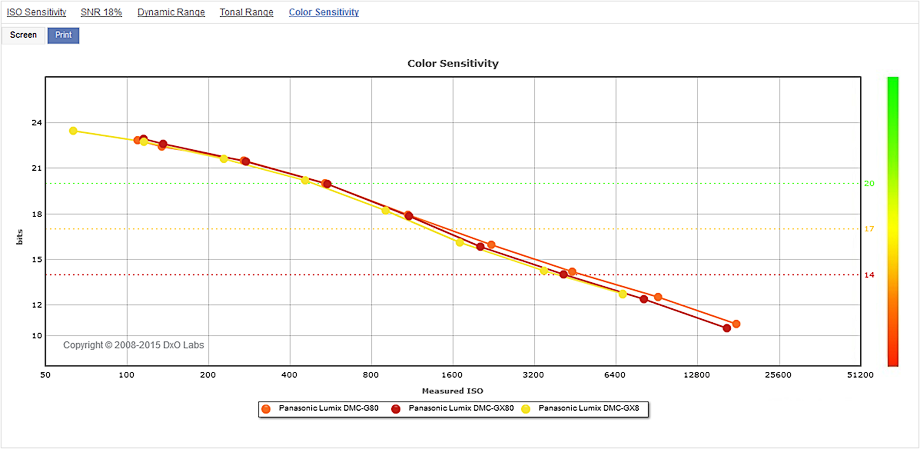
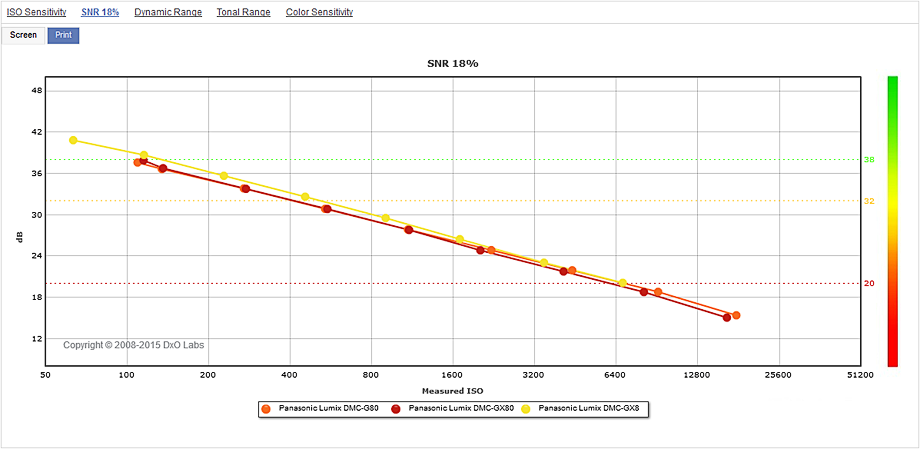
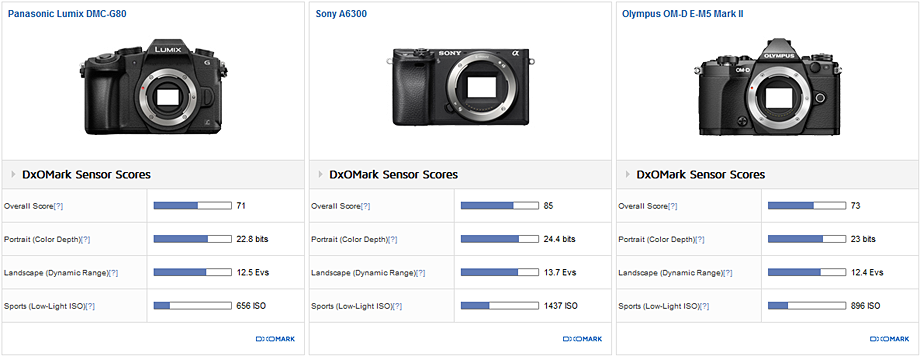
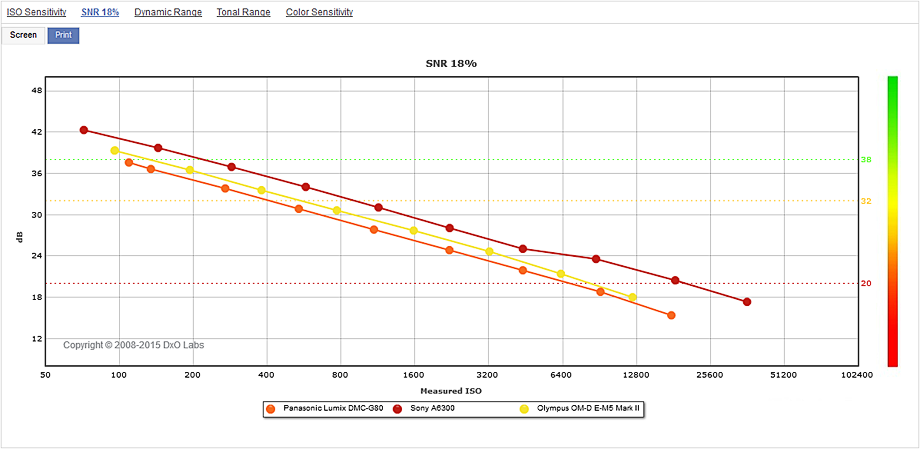
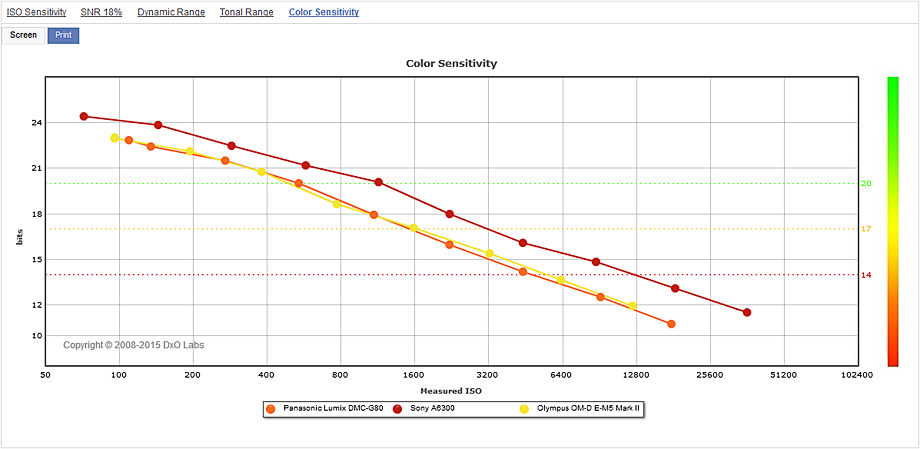
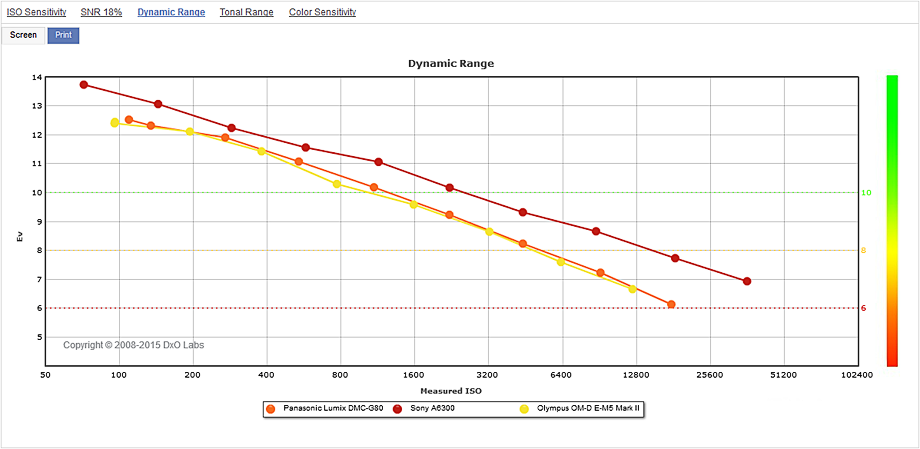
DXOMARK encourages its readers to share comments on the articles. To read or post comments, Disqus cookies are required. Change your Cookies Preferences and read more about our Comment Policy.